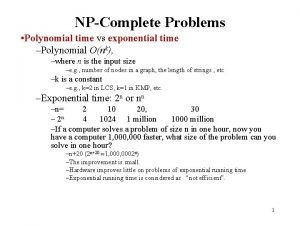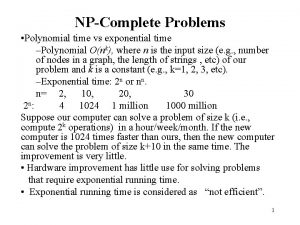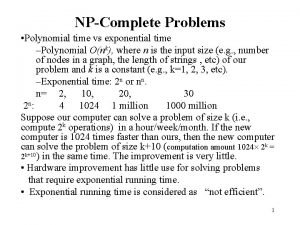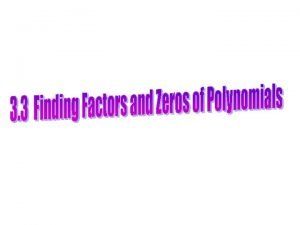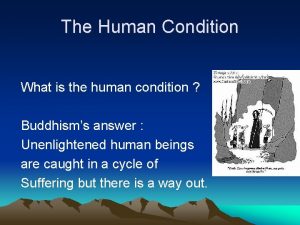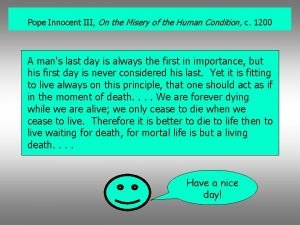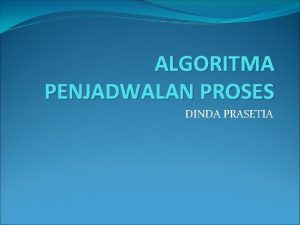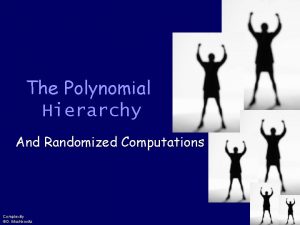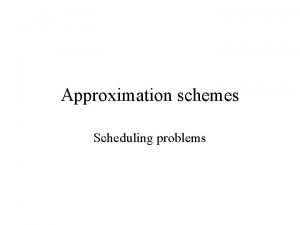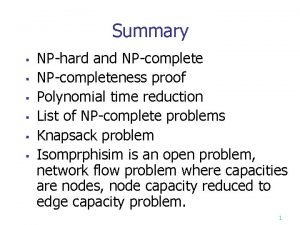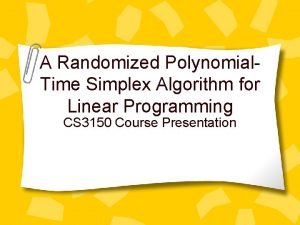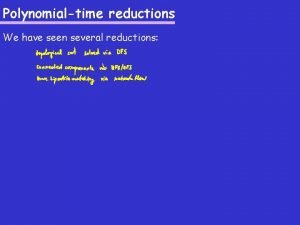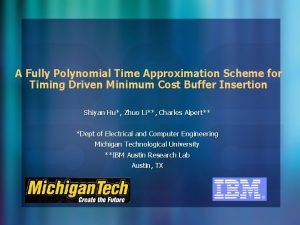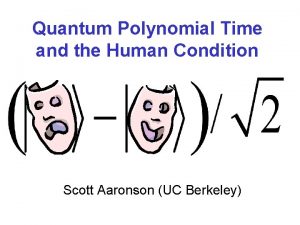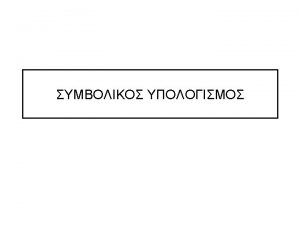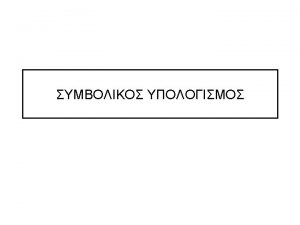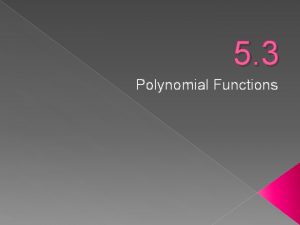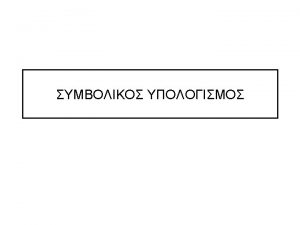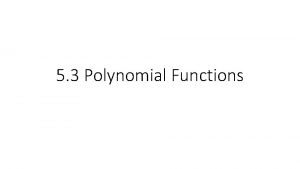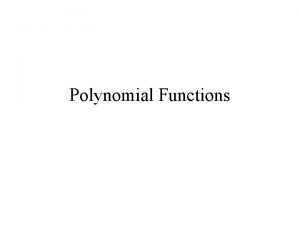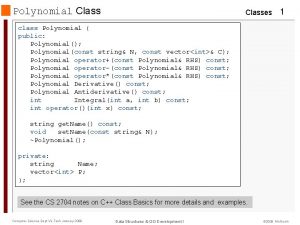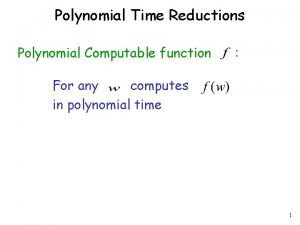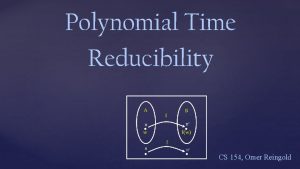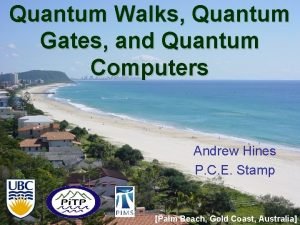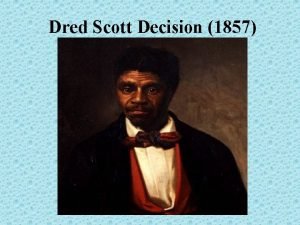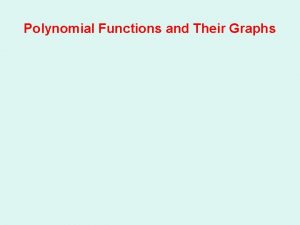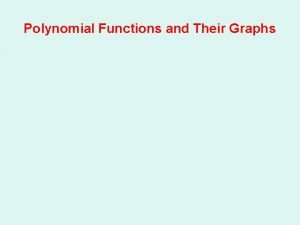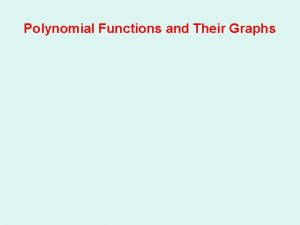Quantum Polynomial Time and the Human Condition Scott











![Ridiculous! Nature couldn’t possibly allow this! [i]ndeed within the usual formalism one can construct Ridiculous! Nature couldn’t possibly allow this! [i]ndeed within the usual formalism one can construct](https://slidetodoc.com/presentation_image/92ac9cb1c3275af402608b2d5d61c021/image-12.jpg)
















- Slides: 28

Quantum Polynomial Time and the Human Condition Scott Aaronson (UC Berkeley)

D U N C E “Computers are useless. They only give you answers. ” –Pablo Picasso Not merely a false statement, but a pompous and asinine one

Computers CAN ask questions

Answers are not always useless

(Picasso would say I’m not addressing the meat of his objection)

Computers led to some of the deepest questions ever asked If youquantum can recognize good ideas, can Can parallelism be harnessed Could machine be conscious? you alsoa have them? (Does P=NP? ) to solve astronomically hard problems? Goal of Talk: Show that this question is ‘useful’ in Picasso’s sense


These movies don’t take their premise to its logical conclusion. Why can’t you learn from 2 n-1 alternate realities instead of just one?

“Let a computer smear—with the right kind of quantum randomness —and you create, in effect, a ‘parallel’ machine with an astronomical number of processors … All you have to do is be sure that when you collapse the system, you choose the version that happened to find the needle in the mathematical haystack. ” From a scene in which the protagonist causes a computer to factor a huge number, by using his newfound ability to postselect quantum measurement outcomes

The Popularizers Have Spoken or t a r y r ato r o b h a c l i h a w e , k r i l ute Un p m o c e y r n a o n s i y d a r thw an o a p e h t obe r p t s um u t n m a u q y l the s , u e o e m i n t ulta at a m i s n a rn rc u t e t d u n p a m t is co w t y r e v e e traverse iately converg ed m m i rge o d e an G –. ize r p e h t upon late S , n o s John See, qu antum c ompute taking a rs, by dvantag e of wei quantum rd phenom make no ena whi ch sense a n underst ands bu d no one t the nu work ou mbers t so shu tt and tak e it—qu he fuck up antum comput ers are able to all poss comput ible com e putation same tim s at the e, by ex i simulta neously sting in an in number finite of para llel univ —“Pop er ular Esc hatolog ses. y”

Ridiculous! Nature couldn’t possibly allow this! QC of the sort that factors long numbers seems firmly rooted in science fiction … The present attitude would be analogous to, say, Maxwell selling the Daemon of his famous thought experiment as a path to cheaper electricity from heat. –Leonid Levin [T]he cost of such an operation or of maintaining such vectors should be linearly related to the amount of “non-degeneracy” of these vectors, where the “non-degeneracy” may vary from a constant to linear in the length of the vector. –Oded Goldreich
![Ridiculous Nature couldnt possibly allow this indeed within the usual formalism one can construct Ridiculous! Nature couldn’t possibly allow this! [i]ndeed within the usual formalism one can construct](https://slidetodoc.com/presentation_image/92ac9cb1c3275af402608b2d5d61c021/image-12.jpg)
Ridiculous! Nature couldn’t possibly allow this! [i]ndeed within the usual formalism one can construct quantum computers that may be able to solve at least a few specific problems exponentially faster than ordinary Turing machines. But particularly after my discoveries … I strongly suspect that even if this is formally the case, it will still not turn out to be a true representation of ultimate physical reality… –Stephen Wolfram It will never be possible to construct a ‘quantum computer’ that can factor a large number faster, and within a smaller region of space, than a classical machine would do, if the latter could be built out of parts at least as large and as slow as the Planckian dimensions. –Gerard ‘t Hooft

Crucial Question for Me Exactly what property separates the Sure States we know we can prepare, from the Shor States that suffice for factoring? DIVIDING LINE

Amp. P I hereby propose a complexity theory of pure quantum states Circuit P Tree TSH OTree MOTree 2 one of whose goals is to study possible Sure/Shor separators. Vidal 1 Strict containment Containment Non-containment 2 1 Classical

The tree size of an n-qubit state | is the minimum size of a tree of linear combinations and tensor products that represents | . (Size = # of leaf vertices) Example: + + |0 1 + |1 1 |0 2 |1 1 |1 2 | has tree size 6

Actual Technical Result A. , quant-ph/0311039 Codewords of random stabilizer codes have superpolynomial tree size If C = {x | Ax b(mod 2)}, where A is chosen uniformly at random from then with high probability requires trees of size nc log n even to approximate well Proof uses recent breakthrough of Ran Raz Conjecture: Same lower bound holds for states arising in Shor’s algorithm

Recent (as in last week) Developments 2 -D cluster states (as proposed by Briegel and Raussendorf) have tree size nc log n. Not true for 1 -D 0 0 1 0 1 1 1 0 NOTE 0 0 1 FOR 1 1 1 0 0 PHYSICISTS: 1 0 0 1 1 I only care Explicit (non-random) cosetabout states, obtained by concatenating Reed-Solomon and Hadamard codes, have tree size qubit nc log n states Exponential lower bounds on “manifestly orthogonal” tree size.

So… Unless there’s a clear, consistent dividing line between what we’ve seen and what QM predicts we’ll see, we ought to worry now about the “quantum computing picture of reality” Could all paths of a maze be traversed simultaneously? In order to win the lottery, prove P NP, date a supermodel, etc. , is it enough for it to be possible that you achieve these things?

BBBV’ 97 Hybrid Argument Can a quantum algorithm that makes fewer than N queries find 1 marked item out of N? In the case that no items are marked, some item must have a. DUDE!!! small total probability of being queried Mark that item and rerun the algorithm Everyone! The marked item! Over here!!! Someone must be screaming about a marked item… too bad quantum mechanics is linear 1|1 2|2 3|3 4|4 5|5 6|6 7|7 8|8 9|9

Actual Technical Result II A. , quant-ph/0402095 Is there some initial state—even a highly entangled, not efficiently preparable one—that would let a quantum computer solve NP-complete problems in polynomial time? After all, such a state might encode information about every MAX CLIQUE problem of size n! We would therefore evade the BBBV conclusion Theorem: Relative to some oracle, NP BQP/qpoly

Proof Idea Can be reduced to showing a direct product theorem for quantum search: Given N items, K of which are marked, if we don’t have enough queries to find even one marked item, then the probability of finding all K of them decreases exponentially in K. Klauck gave an incorrect proof of this. I give the first correct proof, using the polynomial method of Beals et al. Recently improved by Klauck, Špalek, and de Wolf.

So How Should You Solve NPComplete Problems? Measure electron spins to guess a random solution. If the solution is wrong, kill yourself. THAT ’ S If the solution is right, destroy the human race. If ITfor ? billions of years. wrong, cause it to exist Actual Technical Result III (A. , quant-ph/0401062): Let Post. BQP be the class of problems solvable in quantum polynomial time using “postselection. ” Then Post. BQP = PP

Nonlinear Quantum Computing Abrams & Lloyd 1998: We could solve NPcomplete problems efficiently given a 1 -qubit nonlinear gate that acts as follows:

Nonlinear Quantum Computing Abrams & Lloyd 1998: We could solve NPcomplete problems efficiently given a 1 -qubit nonlinear gate that acts as follows:

Nonlinear Quantum Computing Abrams & Lloyd 1998: We could solve NPcomplete problems efficiently given a 1 -qubit nonlinear gate that acts as follows:

Nonlinear Quantum Computing Abrams & Lloyd 1998: We could solve NPcomplete problems efficiently given a 1 -qubit nonlinear gate that acts as follows:

Observation: Given custom-designed 1 -qubit nonlinear gates, we could even solve PSPACEcomplete problems efficiently (but not more) But what about “realistic” nonlinear gates (e. g. Weinberg’s) subject to small environmental error? Abrams and Lloyd’s claim to solve NP-complete problems in this setting seems incorrect Open Problem: The Two-Edged Sword Can we amplify an exponentially small success probability without also amplifying exponentially small errors? (Maybe Gwyneth would be better off without trans-universe communication!)

Conclusion: The Garden of Forking Paths Determinism P Randomness BPP Postselection NP / PP Quantumness BQP “Computers are useless. They only give you answers. ” –Picasso
 Geometrical symbol
Geometrical symbol Quantum physics vs mechanics
Quantum physics vs mechanics Quantum physics vs quantum mechanics
Quantum physics vs quantum mechanics Polynomial time vs exponential time
Polynomial time vs exponential time Polynomial time vs exponential time
Polynomial time vs exponential time Polynomial vs exponential
Polynomial vs exponential Matplotlib inline
Matplotlib inline How to divide a polynomial by another polynomial
How to divide a polynomial by another polynomial Communication and the human condition
Communication and the human condition Example of elapsed time
Example of elapsed time What are 4 noble truths
What are 4 noble truths Human condition literature
Human condition literature Pope innocent iii on the misery of the human condition
Pope innocent iii on the misery of the human condition Human condition magritte
Human condition magritte Definisi penjadwalan
Definisi penjadwalan Terdapat 5 job yang datang hampir pada saat yang bersamaan
Terdapat 5 job yang datang hampir pada saat yang bersamaan Randomized polynomial time
Randomized polynomial time Polynomial time
Polynomial time Polynomial time reduction
Polynomial time reduction Randomized polynomial time
Randomized polynomial time Polynomial time reduction example
Polynomial time reduction example Fully polynomial time approximation scheme
Fully polynomial time approximation scheme Hình ảnh bộ gõ cơ thể búng tay
Hình ảnh bộ gõ cơ thể búng tay Frameset trong html5
Frameset trong html5 Bổ thể
Bổ thể Tỉ lệ cơ thể trẻ em
Tỉ lệ cơ thể trẻ em Voi kéo gỗ như thế nào
Voi kéo gỗ như thế nào Tư thế worm breton
Tư thế worm breton Chúa yêu trần thế alleluia
Chúa yêu trần thế alleluia



